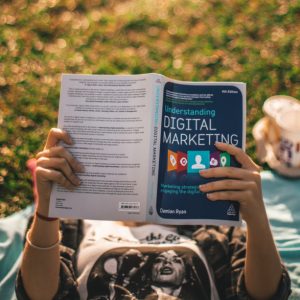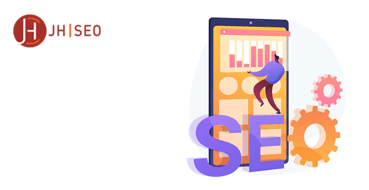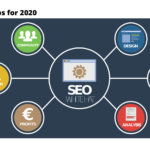In today’s digital marketing landscape, creating content that is not only engaging but also optimized for search engines is crucial for improving your brand’s visibility and driving organic traffic.
Understanding SEO-Rich Text
SEO-rich text is more than just sprinkling keywords into a blog post or web page. It’s about understanding the minutiae that makes search engines tick and using that knowledge to craft content that shines in the SERPs.
SEO-rich text refers to content that is both high-quality and strategically designed to optimize your visibility in search engine results. It involves identifying and using the right keywords, structuring your content in a way that search engines can easily understand, and making sure the technical aspects of your content are spot on.
The Role of SEO-Rich Text in Search Engine Rankings
Search engines, like Google, crawl through billions of web pages to provide the most relevant results for users’ search queries. SEO-rich text ensures that your content communicates its purpose clearly to these search engine bots, so it can be appropriately indexed and ranked in the search results.
Characteristics of SEO-Rich Text
To create SEO-rich content, you must focus on several key characteristics:
- Keywords: Selecting and incorporating relevant keywords is at the heart of SEO. But it’s not just about using the right keywords; it’s about using them the right way — strategically, organically, and with an element of surprise that makes them fit seamlessly into your content.
- Meta Tags: These are the snippets that appear in the search engine results that give users a preview of what your content is about. An optimized title tag and meta description can significantly improve your click-through rate (CTR).
- Heading Structure: Organizing your content with clear and descriptive headings makes it easier for readers to follow. For search engines, headings provide further insight into the structure of your page.
How do SEO rich snippets Work?
Rich snippets are enhanced search results displayed by search engines that provide additional information beyond the typical title, URL, and meta description. These snippets aim to give users a preview of the content on a webpage before clicking through to it. Rich snippets are generated by markup code, such as Schema.org markup, added to HTML to provide search engines with structured data about the content on a webpage.
Key features of rich snippets include:
- Enhanced Information: Rich snippets may include additional information such as star ratings, reviews, product prices, availability, event dates, and more, depending on the type of content.
- Improved Visibility: By providing more context and information in search results, rich snippets can improve the visibility of a webpage and attract more clicks from users.
- Better User Experience: Rich snippets help users make more informed decisions by providing relevant information directly in search results, leading to a better user experience.
- Increased Click-Through Rates (CTR): The enhanced visibility and additional information provided by rich snippets can lead to higher click-through rates, as users are more likely to click on results that offer the information they’re looking for.
- SEO Benefits: While rich snippets themselves are not a direct ranking factor, they can indirectly impact SEO by improving click-through rates and user engagement, which are factors that search engines consider when ranking web pages.
Examples of rich snippets include:
- Review Snippets: Displaying star ratings and review counts for products, services, or businesses.
- Product Snippets: Showing product prices, availability, and other details for e-commerce websites.
- Recipe Snippets: Including cooking time, calorie count, and user ratings for recipe websites.
- Event Snippets: Featuring event dates, locations, and ticket prices for event listings.
Rich snippets like rich text snippets play a valuable role in SEO by enhancing search results, improving user experience, and increasing the visibility and click-through rates of webpages. Implementing structured data markup to generate rich snippets can help website owners make their content more attractive and informative to both users and search engines.
Benefits of SEO-Rich Text
SEO-rich text is more than a mere digital placard for search engines to read—it directly impacts your business outcomes.
- Improved Organic Search Traffic – By attracting searchers looking for what you offer, SEO-rich content can significantly increase your organic search traffic, a cost-effective way to bring new visitors to your site.
- Enhanced User Experience – A clear structure, engaging content, and valuable information keep users on your site longer and encourage them to explore further, signaling to search engines that your content is worth promoting.
- Higher Conversion Rates – Tailoring your content to the needs and search habits of your audience means that visitors who land on your page are more likely to convert—whether that means signing up for a newsletter, making a purchase, or another desired action.
SEO Best Practices for Text Optimization
To master the art of SEO-rich text, it’s essential to adopt best practices that align with how search engines rank content.
Quality Over Quantity
Great content is not a game of word count but of value. High-quality, in-depth content that addresses a topic comprehensively tends to perform better in search engines.
Regular Content Updates
Search engines love fresh content, and so do users. Regular updates keep your site active and relevant, signaling to search engines that your site is worth indexing frequently.
Mobile Optimization
With the majority of searches now taking place on mobile, it’s critical that your content is not just readable but enjoyable and functional on every device.
Link Building Strategies
Inbound links from reputable sources are a vote of confidence in your content and a powerful SEO signal. Pursue guest posting, create shareable content, and engage with your community to build a network of backlinks.
Mastering the Art of SEO Rich Text: Your Ultimate Guide
In the digital marketing landscape, search engine optimization (SEO) remains an undisputed heavyweight. For content creators and digital marketers, understanding and implementing SEO-optimized text is not just crucial—it’s a game-changer. In this comprehensive guide, we’ll unravel the intricacies of SEO rich text to transform your content into a search engine superhero.
SEO rich text is the art of crafting written content that is designed to be more easily found by search engine users. It includes various elements such as headers, meta tags, and links to create a hierarchy of information that is both easy to read and optimized for search engines. By integrating these elements into your content, you can boost your visibility and enhance the user experience on your website.
Utilizing Headers and Subheadings for SEO
Why Structured Content Matters – Structured content is the backbone of SEO. Search engines and users alike love a logical flow that guides them through the content. When you organize your text using headers and subheadings, you’re essentially creating a roadmap for your readers, making their experience more intuitive and enjoyable.
To optimize for SEO, it’s important to feature your primary and secondary keywords in your headers. But remember, SEO is about more than just keywords; it’s about understanding the intent behind those keywords and crafting a narrative that satisfies that intent.
The Art of Header Optimization – When creating headers, aim for clarity and conciseness. Your main header, or H1, should give a clear overview of what the content covers and typically includes your target keyword. Subsequent headers (H2, H3, etc.) can branch into subtopics or further details, each supporting the overall topic and weaving in relevant keywords for cohesiveness.
By employing this approach, you not only please the SEO gods, but also ensure that skimming users can quickly grasp the content’s structure and topic at a glance.
Elevating Your Content Organization – Structured content benefits SEO not only by improving clarity and coherence but also by signaling to search engines the most important sections through the hierarchy of headers. This helps crawlers understand the content’s context and can lead to better indexing and, ultimately, higher rankings in search results.
Meta Tags and Descriptions for Enhanced Visibility
Mastering Meta Tags – Meta tags are snippets of text that describe a page’s content; they don’t appear on the page itself. The most important meta tags for SEO are the title tag (or meta title) and the meta description. Properly optimizing these elements is a key part of ensuring your content shines in search results.
When crafting your meta title, remember that it’s not just about stuffing your keyword in; it’s about writing a compelling headline that entices users to click. Keep it under 60 characters to avoid truncation in search results, and always include your keyword near the beginning for optimal impact.
The Power of the Meta Description – Your meta description is your content’s elevator pitch to searchers. It should be persuasive, descriptive, and succinct, explaining what the content offers and why it’s worth the read. Use action-oriented language and include a call-to-action when appropriate to boost click-through rates.
It’s worth noting that while meta descriptions don’t impact search rankings, they greatly influence whether a user decides to click through to your page. A well-crafted meta description can significantly improve your content’s CTR, driving more organic traffic to your site.
Optimization Best Practices – When optimizing your meta tags, make them unique for each piece of content. Avoid duplicate meta information across your site, as this can dilute the visibility of your pages in search results. Tools like Yoast SEO or SEMrush can help you keep your meta tags in check and offer insights into the performance of your titles and descriptions.
Internal and External Links in SEO Rich Text
Navigating with Internal Links – Internal links are those that point to other pages within the same domain. They serve a dual purpose in SEO rich text. Firstly, they provide a roadmap for search engines to discover and index other pages on your site. Secondly, they help users find related content, keeping them engaged and encouraging them to explore more of your website.
When crafting internal links, use descriptive anchor text that provides context about the linked content. Avoid generic phrases like “click here” or “read more.” Incorporate internal links where they naturally fit within the content, and be sure you’re directing users to a page that is truly relevant to their current reading experience.
The Credibility of External Links – External, or outbound, links connect your content to other sources across the web. By referencing authoritative sites, you not only add credibility to your own content but also contribute to the wider conversation on the topic. When search engines see external links on your page, they interpret this as a signal that you’re providing valuable resources to your audience.
However, proceed with caution—too many external links can dilute your own content’s authority. Be selective in linking out, choosing only the most reliable and relevant sites. Additionally, periodically review your external links to ensure they’re still active and maintained, as linking to broken content can harm your site’s reputation.
Balancing Your Link Profile – For the best SEO performance, maintain a balanced mix of internal and external links. There’s no magic number here, as the ideal ratio largely depends on the length and depth of your content. A good rule of thumb is to include at least one or two internal links for every 500 words and to add external links when they enrich the reader’s experience.
Formatting Techniques for SEO Optimization
Using Text Styling to Your Advantage – When it comes to SEO, the way your text is formatted matters. Bold and italic text can help highlight key phrases, improving scannability for both users and search engines. However, don’t overdo it. Use these text stylings sparingly to avoid cluttering your content and diminishing its impact.
Bullets and numbered lists not only organize information but also draw the reader’s eye and can – if properly optimized – improve your content’s visibility in search. Search engines love lists, and users appreciate the clarity they provide. When creating lists, ensure that each item is valuable and relevant to the list’s topic.
Readability and Engagement – Good formatting isn’t just a treat for SEO—it’s a boon for reader engagement, too. Large walls of text can overwhelm and discourage reading, so break up your content into shorter paragraphs. Each paragraph should cover a single idea or topic, keeping the reader on track and moving through the content smoothly.
Incorporate media such as images, videos, or infographics to break up the text further. Not only do these elements enhance the visual appeal of your content, but they also help convey complex information and emotion, adding layers to your SEO strategy.
Avoiding Formatting Pitfalls – While formatting can enhance your content, missteps can detract from your SEO efforts. One common pitfall is using images of text rather than actual text, which search engines find near impossible to crawl. Always use actual text, and when necessary, use the alt attribute to offer descriptions of your images, incorporating keywords as naturally as possible.
Another mistake to avoid is keyword stuffing. Remember, SEO rich text is about balance. Keywords should be used where relevant and where they flow naturally within the content. Stuffing your text with keywords will not only harm the readability and user experience but will likely result in penalties from search engines.
Tools and Resources for SEO Rich Text
Leading the Charge with SEO Tools – Various tools exist to support your SEO content creation. From keyword research to content optimization, these digital sidekicks offer the data and guidance you need to produce top-notch SEO rich text. SEMrush, Ahrefs, and Google Keyword Planner are just a few industry favorites that can assist in identifying high-value keywords and analyzing the competition.
Plugins for the Poised Content Creator – If you’re using a content management system (CMS) like WordPress, plugins can be invaluable assets in your SEO arsenal. Yoast SEO, for instance, offers actionable tips for optimizing your content right in the editing interface. It evaluates your use of keywords, meta information, readability, and more, providing real-time suggestions for improvement.
Free and Paid Content Creation Resources – The internet is brimming with resources to help you understand and employ SEO rich text, both free and paid. SEO blogs, webinars, and online courses offer insights and best practices, while paid services often provide more in-depth analysis, tools, and support.
Don’t forget the wealth of information available through official search engine webmaster guidelines and forums. Staying informed and adapting to the evolving SEO landscape is crucial for maintaining a competitive edge.
Measuring the Success of SEO-Rich Text
Smart SEO is not guesswork—it’s a strategic pursuit informed by data and constant observation.
Key Performance Indicators (KPIs)
Understanding the KPIs of SEO—like organic traffic, keyword rankings, and CTR—gives you insight into how your SEO strategy is performing.
Tools for Tracking and Analyzing SEO Performance
From the majestic analytics platforms Google provides to the constellation of SEO tools and plugins at your disposal, measurement is only a click away.
SEO-rich text is a powerhouse tool in your digital marketing arsenal. By understanding how to create content that is not only informative and engaging but also optimized for search engine results pages, you can elevate your brand’s visibility, attract more traffic, and convert more customers. It takes time, effort, and dedication to learn and adapt, but the rewards are immense.
The internet is a dynamic and competitive place, but armed with the insights and strategies outlined in this guide, your content can rise above the digital noise and become a beacon for searchers and customers alike. Take the plunge, demystify the art of SEO-rich text, and watch your online presence shine.



































































































































































































































